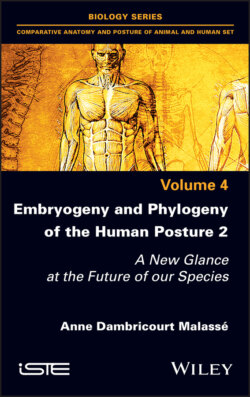Читать книгу Embryogeny and Phylogeny of the Human Posture 2 - Anne Dambricourt Malasse - Страница 20
2.2. The primate ancestor of the human lineage in Montauban
ОглавлениеMarcellin Boule suggested to Teilhard that he complete the Lemoine collection with those of the Museum of Montauban (in southwestern France) where fossils of carnivores from the phosphorites of Quercy dated from 38 to 34 Ma (Terminal Eocene) are preserved. Among the species of these phosphorites are tiny primates barely the size of a mouse, first described by Henri Filhol (1843–1902), the son of the curator of the Museum of Toulouse. They were classified in the group of prosimians of the Tertiary era called Necrolemur. Henri Filhol ended his career at the Muséum national d’Histoire naturelle as chair holder of Comparative Anatomy from 1894 to 1902. Paleontologists would therefore search among these fossils for those that would allow the identification of a possible ancestral lineage of the simians. In 1920, the name prosimian was still being used; it included several current families known in equatorial and tropical Africa, as well as in Madagascar and Southeast Asia. Lorisidae (from the name Loris described in 1796 by Etienne Geoffroy Saint-Hilaire) lived in Africa and Asia; Galagidae (from the name Galago, also described in 1796 by Geoffroy Saint-Hilaire) lived only in Africa; Lemuridae (lemurs) were confined to the island of Madagascar; and finally Tarsiidae (the small tarsier that fits in the palm of the hand) were limited to Southeast Asia. Paul Gervais had decided in 1854 to separate the lemurids and the tarsiids by bringing the latter closer to the simians.
The search for the ancestors of the simians thus focused on those of the tarsiids and this problem was the second subject of Teilhard’s thesis. Fossils of prosimians were accumulating, as well as names and the need to clarify their nomenclature. In North America, there were, for example, Omomys (1869), Notharctus (1870) and Anaptomorphus (1882). Similar species were collected in South America. Others in Europe included Cuvier’s famous Adapis (1821), Microchoerus (1846) and Filhol’s Necrolemur. These fossils and the present families gave two main phyletic orientations because of the external appearance of the skull of the tarsier. All of the skulls had a long muzzle aligned in the extension of the spine, except the tarsier, which gave the impression of a globular neurocranium, a very short face and a great occipital hole (foramen magnum) tilted forward and downward. The approach to simians was built on these adult exocranial appearances, without considering their embryonic morphogenetic trajectories.
The internal base and the sphenoidal angle were ignored because observation and measurements were not conceivable; they would destroy the integrity of the fossils, which were rare. As for Broca’s measuring instruments, they could only be used for very large skulls. Therefore, the sphenoidal angle and the straightening of the base would not be studied by paleontologists and would not enter into phylogenetic criteria. The logic of comparative embryonic chronology, which should have developed after Haeckel, was not to have a future in paleontology. Today, nomenclators (classifiers) no longer speak of prosimians, and they distinguish at least two lineages, one that brings together species with long snouts and small orbits, the other that brings together species with very large orbits and seemingly have short snouts. The first are the Strepsirrhini (e.g. Cuvier’s Adapis and lemurs), the second are the Haplorrhini with the tarsier and a fossil species like Omomys (North America). The nomenclators then explained that the simians were also Haplorrhini. In other words, the classifiers invented a category based only on adult exocranial features, without being interested in the orientation of the clivus, which was not taken into consideration. The origin of its straightening was left aside by paleontologists and therefore ignored, only the orientation of the occipital hole counted, as in Daubenton’s study.
However, these analogies with simians were only made due to the disproportionate development of the orbital cavities; the skull disappeared under two enormous eyes, while in the median sagittal section the face was no less prognathic than a Loris and the primordial cranium (the base) was flat. It is the development of the embryonic optic capsules that disorganizes the shape of the forehead and thus gave the impression that there is no muzzle (see Chapter 5). These differences have nothing in common with the embryonic mechanisms that straighten the dorsal cord and separate the simians, or Simiiformes, from the prosimians, which in fact include Tarsiiformes and their ancestors.
If Georges Cuvier were still alive, he would have adopted the same posture as that of Etienne Geoffroy Saint-Hilaire who could not distinguish between analogy and homology. Consequently, as we have seen, the latter did not conceive of the need to take into account, in the nomenclature, the primary reality of the organizational plans structured from embryogenesis. Yet, these plans did not fit into each other, they emerged from each other. Georges Buffon would have said that the Haplorrhini category was a view of the mind, that it had no basis in reality. There was no cranio-spinal embryogenesis common to tarsiers and simians.
